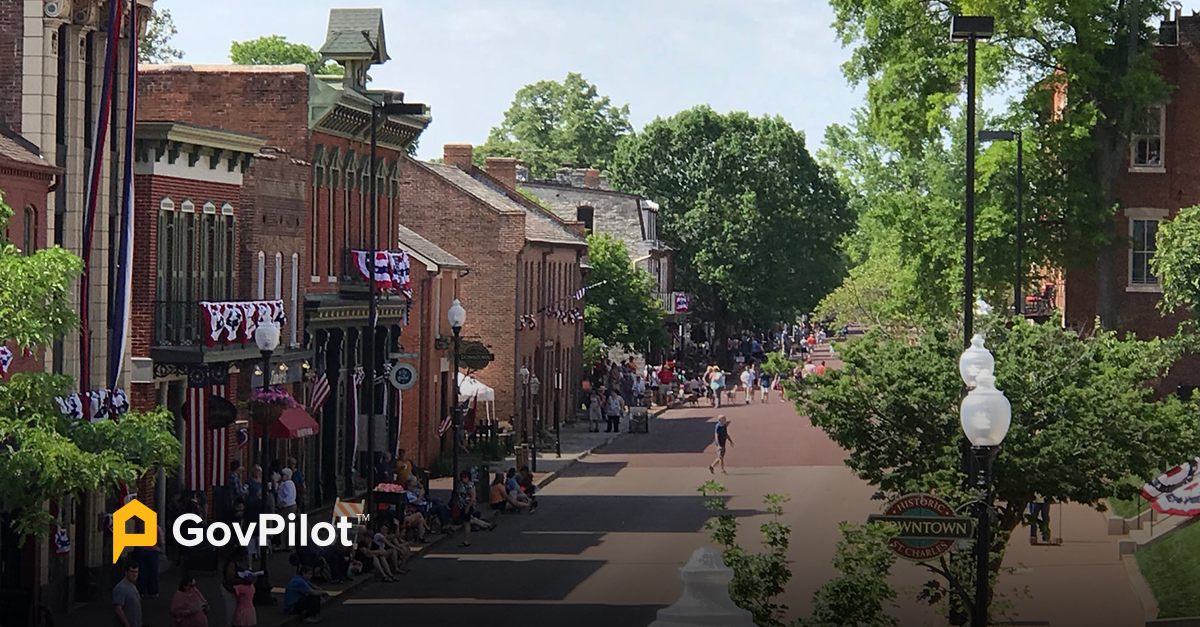Research shows that crime rates have risen throughout the United States during and beyond the pandemic. In both urban and rural communities, constituents and government officials alike, understand the serious threat that increased crime rates present to communities.
In the 2022 midterms, increased crime rates were a key issue that everyone was understandably concerned about.
Local governments need to take precautions to ensure the safety of citizens in your jurisdiction, especially in public areas. In this article, we’ll highlight how your local government can mitigate potentially dangerous situations, discourage crime in your neighborhood, and use law enforcement and government technology to keep your community safe.
Why Do Local Governments Need to Be Concerned About Crime?
Since the COVID-19 pandemic, crime has increased dramatically in left-leaning and right-leaning states alike. Increased social unrest since the pandemic has contributed to a nationwide rise in crime. Violent crime has increased about 30 percent since 2020, creating a critical need for local governments to step up in addressing this issue and prioritize local safety.
Historically, urban communities have higher rates of crime than rural ones, often attributed to the higher populations and opportunities for crime in cities. In 2021, urban crime rates more than doubled the rate of crimes in rural areas. On average, violent crime has climbed by 12 percent in U.S. cities, while property crime has declined. Robbery rates fell in the average U.S. city by 23 percent, while murder and aggravated assault all climbed by 25 percent or more.
In rural America, violent crime rates did rise an average of 20 percent after the COVID-19 pandemic. Property crime rates in rural America have recently doubled the property crime rates in urban areas, according to data from 2021.
What Role Should Local Governments Play in Community Safety?
Your local government officials have the most influence on how successfully crime is prevented in your municipality. The police are no longer viewed as the sole protector of the community, as local governments are expected to mitigate crime and instill preventative safety protocols throughout the community. Now more than ever, partnerships between local government officials and their local police force require strong strategic planning from local leaders like mayors, city managers and city planners.
Relevant considerations for your local government include:
- Recognizing the potential reasons crime is rising in your locality is vital to understanding crime rates; reasons often being poverty and neglect of neighborhoods/communities in your city. Supporting underserved communities through social programs and inclusive public school curriculum is the first step to preventing future crime.
- Increasing access to healthcare has shown to have positive effects on the community because people are able to receive affordable help in combating mental illness and substance abuse.
- Organizing community emergency response and violence intervention groups that consist of professionals trained to de-escalate conflicts, and civilians volunteering for neighborhood watch duty has shown significant increases in local safety.
How to Form a Community Safety Strategy
A community safety strategy is a strategic plan enacted for crime prevention and community safety. Your locality should dedicate time and effort into organizing your own safety strategy tailored to address your needs.
1. Identify Goals For Your Community
From making public parks safer to decreasing home invasions, every community will have different public safety issues to address within their strategy. Identify goals for your community safety strategy based on your exact needs.
2. Assess The Current Crime and Violence in Your Municipality
Dedicate time to analyze and pinpoint the most pressing safety issues in your municipality and begin to build out ways to mitigate the issues. For example, if public transit safety is a big safety hazard in your locality, address that specific concern with ideas for solutions that address every aspect of the problem; the transit operators, transit security, preventative measures for constituents, proposed budget needed to fix the issue. Here’s some quick Tips & Considerations for Improving Local Public Transportation.
3. Organize A Municipal Violence Prevention Committee
Municipal Violence Prevention Committees (MVPC’s) are government organized and supported groups that consist of varied members of the community. This includes private-sector organizations, individual leaders, community groups, non-governmental organizations, and public safety authorities such as the police. Employ volunteers to address safety concerns in the community and conceptualize solutions that should be implemented.
Working in public-private partnerships is a win-win for the community as a whole. Learn more about the Benefits of Private-Sector Partners.
4. Legalize and Train the Municipal Violence Prevention Committee
Formally present the committee to the municipal council for approval. The MVPC needs to have an organizational model with regulations to dictate the conduct of sessions, membership requirements, and responsibilities of members to be approved.
Training the committee is vital because it establishes a baseline for all members to understand crime prevention and different types of violence they may be combatting. The MVPC training should include topics such as gender and family violence, the role of police in prevention compared to community-based policing, inclusion of marginalized people, child protection, and conflict sensitivity.
5. Set a Timeline For Future Work Plans
Strategic plans should span across several years, and focus on the big picture changes you can make in your locality. It is important to revisit your plans annually, with resources allocated in the budget to achieve more each year. Organizing the timeline of what projects you can complete within the year will keep the members focused.
6. Enforce Safety Protocols
Once your MVPC has identified the best way to handle safety concerns, your local law enforcement and government offices must be ready to enforce the new safety protocols throughout the community. Be sure to encourage that law enforcement and the MVPC are focused on working together to find solutions and make the community safer.
7. Engage Your Constituents
Keep the constituents informed. Your local government should be sharing updates about the progress of addressing safety concerns and successes of the MPVC. Reassuring your constituents that the local government is working to keep them safe encourages them to get involved in solutions and think positively about their local government. GovPilot's law enforcement software can help your police department operate more efficiently and improve constituent engagement.
Common Challenges Local Governments Face by Region
Local governments face a variety of challenges in keeping their communities safe; specific challenges vary depending on the culture and size of your locality. Your local government might share some of the common challenges listed below that cities, suburbs, and rural areas often face.
Community Safety Challenges in Cities
In larger urban areas and cities, communities have to combat the impact of a lack of affordable housing and high poverty rates. Housing instability is a serious stressor for many citizens in urban areas, alongside the challenges that poverty presents.
Big cities usually have the highest rates of violent crime, and crimes initiated due to drug addiction/abuse. Drug abuse in major cities such as New York and San Francisco has risen dramatically over the past decade and accounts for a large percentage of safety concerns.
Community Safety Challenges in Suburbs
The well-being of citizens in suburbs commonly relies on social services organizations, but in many communities the services which are available are far less extensive than the community requires. Lack of social service availability stretches operations of the services across much larger areas than their urban counterparts and often loses effectiveness and helpfulness.
Property crime and motor vehicle theft are two major threats for those who live in the suburbs, falling into the category of crimes of opportunity.
Community Safety Challenges in Rural areas
One of the pressing issues for rural communities is a lack of access to healthcare resources including private practice offices, ER’s/hospitals, and psychiatrists. Lack of healthcare opportunity creates public health concerns that need to be addressed by the local government.
In rural areas, property crimes and theft make up the bulk of the crime rate. A main contributor to these crimes being committed is a lack of job opportunity or upward mobility in these municipalities.
Government Technology Can Help Keep Your Community Safe
- Utilize the cloud to organize legal paperwork. Uploading your government files onto the cloud, with government software, allows paperwork and documents to be automatically stored and backed-up in the cloud and are accessible to you with just a few clicks.
- Make property records visible from a local GIS map for police officers to view before going on premises when addressing a 911 call or another kind of incident investigation. Allowing officers access to property records makes it possible for them to look for patterns at residences and equip them to better handle situations at hand.
- Analyze intuitive dashboards that break down safety data specific to your locality. Intuitive dashboards make it possible to identify trends in crime data and have a more comprehensive understanding of the crime patterns in your community. GovPilot pulls data across government key performance indicators into dashboards and reports in real-time, allowing local governments to assess crime data and other key metrics like budget allocation, revenue generation, etc.
- Encourage constituents to use Report a Concern technology which allows constituents to alert their local government if they see a non-emergency issue worth reporting through a simple app. Constituents should be reminded to call 911 with any emergencies.
- Create a special needs registry to allow family-members of disabled citizens to file reports with your local law enforcement for specific context into how to appropriately respond to any situation they are involved in.
- Use government social media and your government website to communicate with constituents regarding active crime scenes, at-large criminals, etc. to ensure citizen safety in dangerous situations.
Wondering What to Look for in Law Enforcement Software? Here’s everything to know.
Modernize Your Safety Strategy
Your local government should capitalize on the available government technology to streamline efficiency and expedite solutions that will make your community safety strategy the best it can be. Government officials no longer need to dedicate the vast amount of time and resources that they used to to administer government processes; most steps to build out your local government safety strategy can be done with ease online using Govpilot’s government software solutions.
Book a consultation with Govpilot to share your community's challenges and goals with professionals that can offer you technology solutions.
Community Safety Strategy FAQs
Why use government software to ensure safety?
Government software streamlines processes that once would have taken a lot of time and resources, making it simpler to implement safety protocols into your community. Government software eliminates the guesswork of identifying problems in your community, ensuring local safety through data analysis tools.
How to find community safety volunteers?
Post volunteer job listings and information on how constituents can sign up for volunteer opportunities on your local government website. Learn more about getting your constituents involved in local government.
What is the safe streets initiative?
The Safe Streets Initiative is a coalition of business and government agencies committed to keeping communities safe by encouraging drivers to keep up safe driving habits and always find a safe ride home.
Sources
https://www.city-journal.org/violent-crime-in-cities-on-the-rise
https://www.safehome.org/resources/crime-statistics-by-state/
https://icma.org/articles/article/local-crime-and-violence-prevention-8-steps-engage-residents







